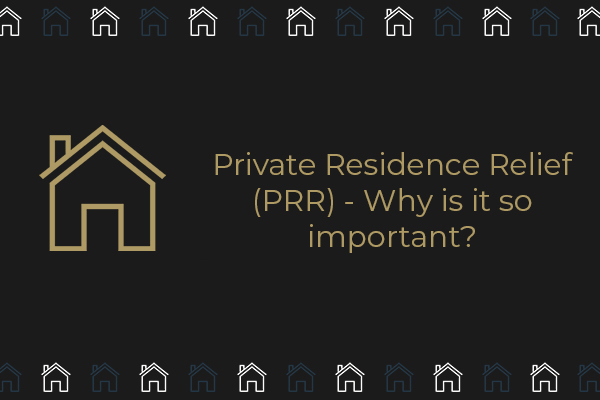Private Residence Relief (PRR) – Why is it so important?

Private Residence Relief (PRR) is an extremely important relief. It is the reason that when individuals sell their home that they can receive 100% tax relief and therefore pay no capital gains tax, assuming they lived in the property the whole time, have not lived elsewhere or used the property for business purposes.
For properties with large gardens and grounds, it should be noted that PRR only covers a permitted area of 0.5 hectares and therefore PRR may not cover the whole gardens and grounds of the property.
Periods of absence
Periods of absence can restrict amounts of PRR available, where the property is not being used as a main residence, but there are periods which can still be exempt if you are away from the property for one of the reasons below:
- The final 9 months is treated as deemed occupation. This is extended to 36 months if the owner moves to a care home or is disabled.
- If there is a gap of less than two years between buying a property and moving in, then PRR can be claimed provided it was due to construction, decoration, renovation or due to a delay in selling your previous home and no one else lived in the property during that period.
- If you intended on living in the home but were prevented from doing so due to living in job related accommodation (for example, armed forces, living in vicarage, etc), PRR can be claimed for the period of intention.
There are also periods that can be claimed provided you live in the property both before and after the following:
- Any period of absence less than 3 years (or less than 3 years when combined)
- Periods working abroad.
- Prevented from residing in home due to place of work or any condition imposed by employer.
For individuals with second residences, only one property can be treated as the main residence. It is possible to make an election to nominate one of the properties as your main residence and therefore this will be the property that receives PRR. If no election is made the main residence will be based on facts relating to the properties.
Married couples can only have one main residence, but there is a useful spousal exemption which enables changes in ownership without triggering CGT. However, Stamp Duty Land Tax (SDLT) may be triggered in transferring from sole to joint ownership and it’s always best to seek advice before making these changes.
As can be seen in the above, there are key areas that should be factored into any decision to sell a property. If selling a former residence which doesn’t qualify for full PRR and there is CGT to pay, then a CGT return and payment of the CGT liability will both be due within 60 days of completion.
For more information, please contact your local Perrys branch.








